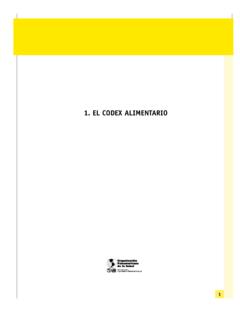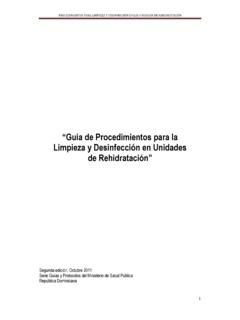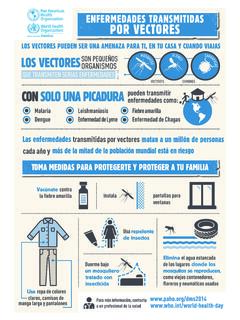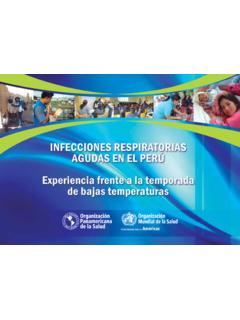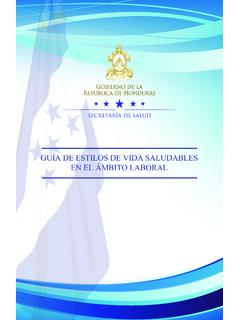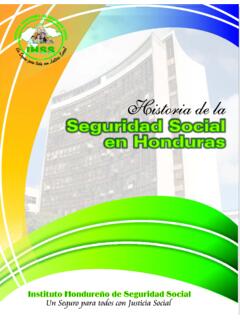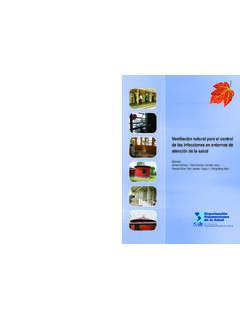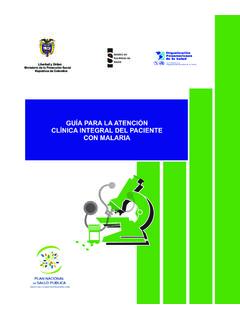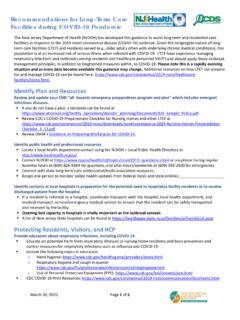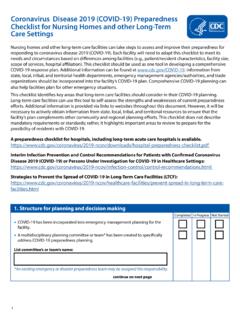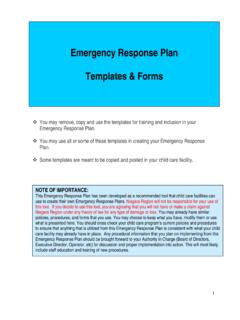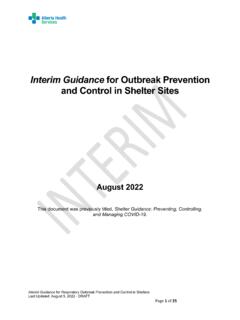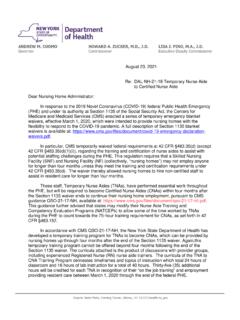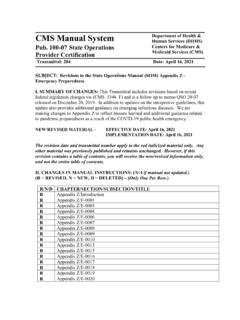Transcription of WHAT ARE ESSENTIAL SERVICES?
1 ----DISASTER MANAGEMENTMAINTENANCE OF ESSENTIAL SERVICES1 TOOL16 This tool will help you to: Identify ESSENTIAL services in a municipality Create a Continuity of Government Plan Help all sectors create Continuity of Operations Plans for ESSENTIAL servicesWho will implement this tool: The mayor or the municipal leadership team All sectors, agencies, businesses, and organizations that provide ESSENTIAL services for the municipalityWHAT ARE ESSENTIAL SERVICES? ESSENTIAL services are the services and functions that are absolutely necessary, even during a pandemic . They maintain the health and welfare of the municipality. Without these services, sickness, poverty, violence, and chaos would likely result. While each municipality will need to determine what its ESSENTIAL services are, here are some examples: Executive governance (the mayor, or his/her designee, who is in charge and has the authority to make executive decisions and enact policies) Healthcare Fire and police protection Provision of clean water Basic sanitation, including sewage and garbage removal Maintenance of communication infrastructure ( , telephone system, radio, internet) Maintenance of utilities ( , gas and electricity) Provision of food and other ESSENTIAL goods (see below) Transportation Road maintenance/repair Banking Payroll departments Tax collectionEssential goods are the food and other supplies that a municipality needs to survive, such as medical supplies and workers are the personnel needed to maintain ESSENTIAL services are the services that are not ESSENTIAL to a municipality s survival and can be stopped or closed down during a pandemic .
2 Some examples are: Tourism Culture/entertainment Libraries Retail stores Barber shopsPREPAREDNESSTOOL 16: MAINTENANCE OF ESSENTIAL SERVICES2 LEADERSHIP DURING A pandemic : WHAT YOUR MUNICIPALITY CAN DO3 TOOL 16: MAINTENANCE OF ESSENTIAL SERVICESWHAT IS CONTINUITY OF OPERATIONS?Continuity of Government Plans and Continuity of Operations Plans for businesses and organizations help them to continue providing their ESSENTIAL services during times of crisis. (A Continuity of Government plan is a Continuity of Operations Plan for government the term Continuity of Operations Plan will be used to refer to plans for both government and business in this document.)Governments and businesses use these plans to prepare for disasters, such as a pandemic , during times when it is difficult or impossible to operate normally. HOW CAN CONTINUITY OF OPERATIONS REDUCE DEATHS DURING A pandemic ?Experts estimate that at the peak of a pandemic , 40 percent of the workforce will be unavailable to work. Employees may be sick themselves or caring for sick family members.
3 So it is almost certain that key government and business leaders, and many ESSENTIAL workers, will be unable to work for a period of time. At the same time, there will be higher demands for some ESSENTIAL services, such as to continue basic services during a pandemic will result in many unnecessary deaths. Municipalities that create Continuity of Operations Plans ahead of time will be able to reduce the number of deaths by accomplishing the following: Maintaining strong government leadership Helping to feed their populations Continuing to provide clean water, electricity, sanitation, communications, and other basic services Continuing to provide healthcare services to those who need them most HOW TO GET STARTED1. Identify all the ESSENTIAL services in the municipality. Ask businesses and organizations to identify the ones they provide. Create a list that includes all ESSENTIAL services. 2. Identify all non- ESSENTIAL services that could be suspended during the pandemic . Plan to use those resources to support the ESSENTIAL Identify all sectors, businesses, and organizations that will need to develop Continuity of Operations Convene the municipal leadership team and any other individuals involved to create the municipal Continuity of Operations Plan.
4 The group can use the following instructions as a guide to create this TO DEVELOP A CONTINUITY OF OPERATIONS PLANEach organization (including sectors and businesses) identified in step 3 above should take the following steps to create a Continuity of Operations Plan:1. Use Tool 3, pandemic Health Impact Projection Tool to estimate how many people in the organization will likely get sick, and how many will die during a pandemic . Note: In the first yellow box labeled Enter target population here, enter the name of the organization. In the second yellow box labeled Enter population size here, enter the number of employees in the organization (rather than the total population of the municipality).Pay attention to the numbers of cases during the peak weeks. This is the number of employees that would be expected to get sick during the peak weeks of the wave. However, there will be other employees who are absent from work because they are needed to care for sick family members, provide child care, or are afraid to come to work.
5 Therefore, the total absentee rate is expected to be somewhat higher than the rate of sick employees. It is recommended that organizations base their plans on a severe pandemic (category 5). It is better to prepare for a worst-case scenario than to be underprepared. If the organization plans to continue services during the worst week, it should be able to continue them throughout the long duration of the Using Handout 1, identify what the organization needs to maintain each ESSENTIAL service it provides:A. Determine how many additional workers are needed to fill in for ESSENTIAL workers. B. Discuss where substitute employees will come from ( , non- ESSENTIAL workers or volunteers). Also, consider the following possibilities for maintaining ESSENTIAL services during times of high absenteeism: adjusting numbers of staff, adjusting shift lengths, alternate work schedules, and alternate work Find out what systems/supplies/equipment are Determine who will be in charge when leaders are absent.
6 Using the first part of Handout 2, identify ESSENTIAL authorities for the organization and at least two back-up personnel for each In the second part of Handout 2, list all ESSENTIAL positions/functions within the organization, and identify at least two back-up people for each Prioritize all ESSENTIAL people, material, and support. Create a list of ESSENTIAL workers who will need priority access to any medications, personal protective equipment, gasoline, or other Make a list of facilities, vital records (including financial records and confidential records), materials, and other resources that need to be protected. A. Make a plan for protecting these resources. For example, police or military support might be needed to prevent looting or other hostilities that may result from the lack of ESSENTIAL goods during a pandemic . B. For vital records, identify the minimum set of records that must be maintained and available, and train sufficient personnel on how to access, store, and maintain these : A specific responsibility or task assigned to an individual.
7 For example, the authority to close a business, the authority to make decisions on behalf of an organization or government, or the authority to implement policies or safety DURING A pandemic : WHAT YOUR MUNICIPALITY CAN DO5 TOOL 16: MAINTENANCE OF ESSENTIAL SERVICES (HANDOUT)OTHER PREPAREDNESS STEPSOnce the Continuity of Operations Plan is developed, take the following steps:1. Train employees in the following areas:A. How to implement the organization s Continuity of Operations PlanB. Ways to develop personal back-up plans for transportation, family needs, etcC. How to keep themselves healthy at importance of social distancing measures, including voluntary quarantine and isolation and working from home (For more information, see Tool 5, Non-Pharmaceutical Interventions (NPIs): Actions to Limit the Spread of the pandemic in Your Municipality.) E. Repeat this training as often as needed to ensure the workforce is prepared. 2. Train back-up personnel in skills needed to provide ESSENTIAL functions for which they have been If possible, begin to stock up on supplies and spare Develop a set of policies and plans to re-open schools, businesses, and resume non- ESSENTIAL services and serviceNumber of additional workers neededSources of back-up personnelSystems and equipment needed1 Example: Staffing of Health PostsNongovernmental organizations, universities, academic training programs, retired healthcare workers, volunteersVehicles, gasoline, protective equipment, medical supplies2 Example: PolicePrivate-sector security forcesVehicles, gasoline, protective equipment, ammunition34567 HANDOUT 1 ESSENTIAL SERVICES6 LEADERSHIP DURING A pandemic : WHAT YOUR MUNICIPALITY CAN DO7 TOOL 16: MAINTENANCE OF ESSENTIAL SERVICES (HANDOUT)AuthorityRole or person with responsibilityFirst back-up personSecond back-up personExample: Activate emergency planName:Telephone:Email:Name:Telephone: Email:Name:Telephone:Email.
8 Example: Create lawsExample: Close a businessPosition/FunctionCurrently in positionFirst back-up personSecond back-up personExample: PayrollExample: Utility repairExample: Computer repairHow to use this table: In the Authority column, list all ESSENTIAL authorities for your organization; then identify at least two back-up people for each authority. In the Position/Function column, list all the ESSENTIAL functions of your organization; then identify at least two back-up people for each function. In this section, identify individuals by role rather than by name ( , Deputy Director, rather than John Smith). For each back-up person, provide the person s name and contact information. Update contact information on a regular basis. Add more rows as 2 DELEGATION OF AUTHORITY AND IDENTIFICATION OF BACK-UP PERSONNEL8 LEADERSHIP DURING A pandemic : WHAT YOUR MUNICIPALITY CAN DOSOURCES FEMA ( Federal Emergency Management Agency). 2006. pandemic influenza continuity of operations (COOP) annex template instructions.
9 Government of New Zealand. 2005. Influenza pandemic planning: Business continuity planning guide. Ireland Department of Enterprise, Trade, and Employment; Enterprise Ireland; Forf s; and IDA Ireland. Business continuity planning responding to an influenza pandemic . Rasmussen, M., L. Koetzle, Mulligan, and S. Bernhardt. 2006. Preparing your business for the impact of a bird flu pandemic . Cambridge, MA: Forrester Research, Inc. Department of Health and Human Services and CDC (Centers for Disease Control and Prevention). 2005. Business pandemic influenza planning checklist. Department of Homeland Security. 2006. pandemic influenza preparedness, response, and recovery: Guide for critical infrastructure and key resources.

